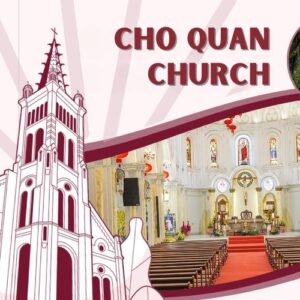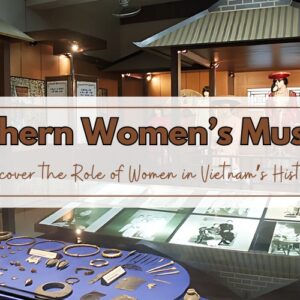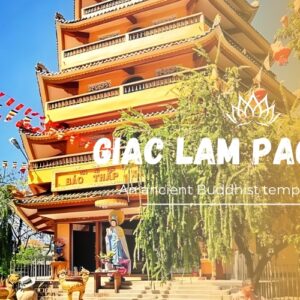Ho Chi Minh City Hall is always on the top of the list of the majority of tourists when they want to explore and learn about the history of Ho Chi Minh City. This is an ideal destination for those who love the beauty of French colonial architecture and historical relics. This guide will help you gain a deeper understanding of the history of the city and bring you and your family a meaningful trip.
General information of Ho Chi Minh City Hall
Address: 86 Le Thanh Ton, Ben Nghe Ward, District 1, Ho Chi Minh City
Ho Chi Minh City Hall, or Ho Chi Minh City People’s Committee, is one of the city’s most famous tourist attractions. It not only reflects the city’s rich history, demonstrating the city’s development but also the value of painting, architecture and sculpture. Since November 4, 2020, it has been recognized as a National Architectural and Artistic Monument.
This building is one of the oldest, largest and most beautiful French-style architectural works in Ho Chi Minh City. After hundreds of years of experience, it still retains almost completely preserved decorative paintings, sculptures and murals. With its stunning French colonial architecture and vibrant cream and yellow colors, the building has become a favorite tourist destination and a symbol of Saigon, one of the city’s most iconic landmarks.
> > > For a deeper dive into Ho Chi Minh City’s rich history and vibrant culture, consider our Ho Chi Minh City Tours – the perfect way to uncover hidden gems and local experiences!

Ho Chi Minh City Hall, or Ho Chi Minh City People’s Committee
History of Ho Chi Minh City Hall
Ho Chi Minh City Hall, originally called Hôtel de Ville, was designed by Paul Gardès, a famous French architect. Construction began in 1898 at the end of Charner Street (the old name of Nguyen Hue Walking Street) and the main part was completed in 1908. The entire design, construction and decoration were built and supervised by the French, with modern materials, the most prosperous Western designs of the time were concentrated here. When it was first built, this building was simply a hall with a clock tower on top and two one-story buildings on each side of the main hall. In the 1940s, these buildings were upgraded to two floors.
At first, this was the headquarters of the Saigon City Council, called the Saigon City Hall, Dinh Xa Tay. After the country’s reunification on April 30, 1975, this place became the workplace of the Ho Chi Minh City government with the full name of the Headquarters of the People’s Council – People’s Committee of Ho Chi Minh City, a place to welcome international leaders and organize important conferences of the city’s leaders.
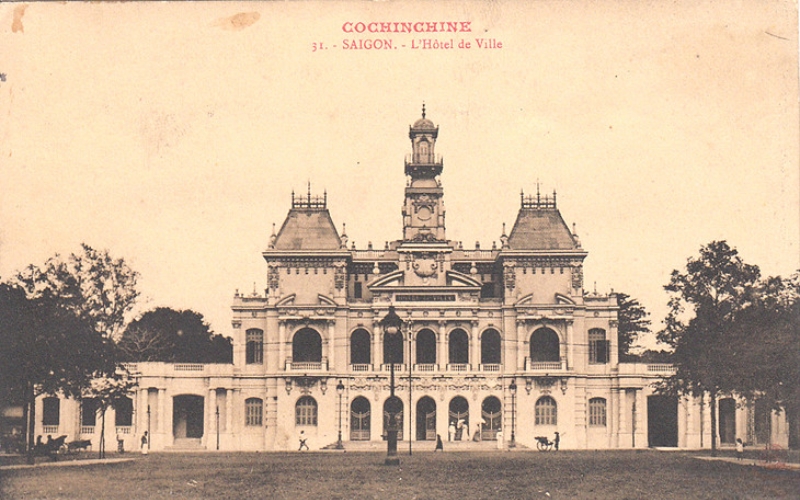
The square when it was still a hotel
What to see at Ho Chi Minh City Hall
Stunning colonial architecture
Ho Chi Minh Square is easily spotted from afar thanks to its pale white and yellow colors and its enormous size. The Vietnamese flag atop the bell tower also makes it stand out from the city’s skyscrapers. Although you can’t go inside, the exterior of Ho Chi Minh City Hall has plenty to admire. The iconic exterior of the building was inspired by the beautiful Renaissance architecture, with distinctive aesthetics that emphasize relaxation and elegance.
The hall has three main buildings, with the middle building being the tallest, creating a balanced structure. There are also three reliefs on the building, the right and left ones depict goddesses holding swords, while the middle one depicts a nymph and two angels fighting fierce beasts. They are the work of Ruffer and Bonnet, two prominent sculptors of the period.
The interior design is also influenced by French Renaissance architecture, with walls covered with paintings of wreaths, palm leaves, laurel branches and angels. The interior of the building is lavishly decorated in the style of Louis XV such as wreaths, palm leaves, ribbons, laurel branches, floral reliefs, and shields, along with neon lighting, chandeliers and stained glass. All combined with rustic wood colors, ceramic art, and Vietnamese mosaics.
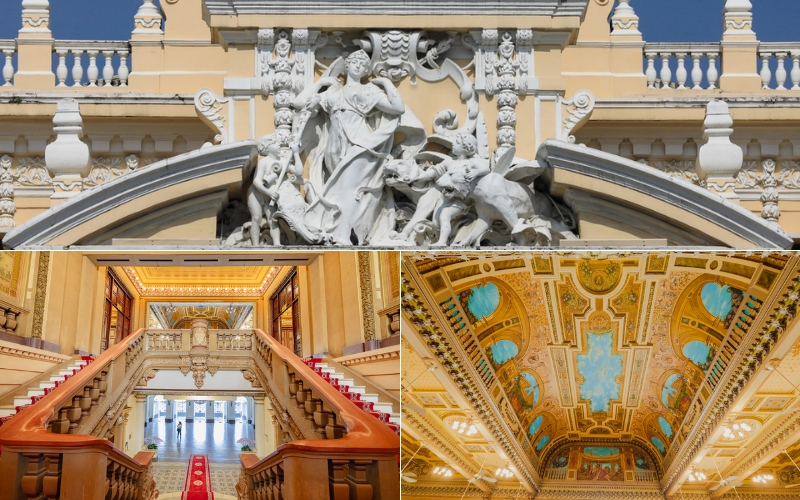
The beautiful Renaissance architecture of the hall
The Ho Chi Minh Statue
Standing right in front of the City Hall is the majestic statue of President Ho Chi Minh, one of the most important symbols of the city. The bronze statue was inaugurated in 2015, to show the love and respect of the Vietnamese people for the great leader. The statue is surrounded by a beautifully landscaped garden with lush greenery, colorful flowers and fountains, creating a peaceful setting and a gathering place for both locals and tourists.
Many visitors come here to pay their respects, take pictures or simply enjoy the peaceful atmosphere. Many visitors like to start at the top of Nguyen Hue Street and walk down to the City Hall, enjoying the open pedestrian area, which often hosts public art exhibitions and festivals. The fountain in front is a great place for children to rest and play, often with background music.
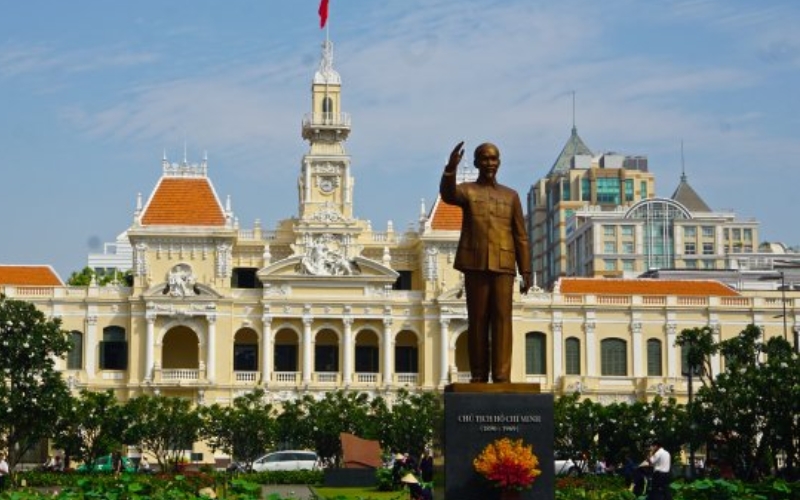
The statue of President Ho Chi Minh in front of the hall
Iconic attractions near Ho Chi Minh City Hall
Notre Dame Cathedral
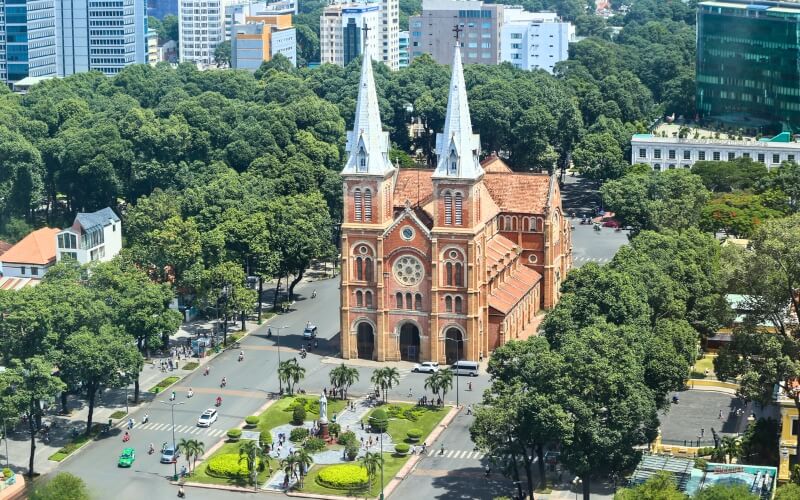
An aerial view of Notre Dame Cathedral
Notre Dame Cathedral is an iconic structure of the French colonial period built in the 19th century. This is a prominent architectural symbol of Ho Chi Minh City, attracting many visitors to check in, visit and experience the solemn religious space.
Independence Palace
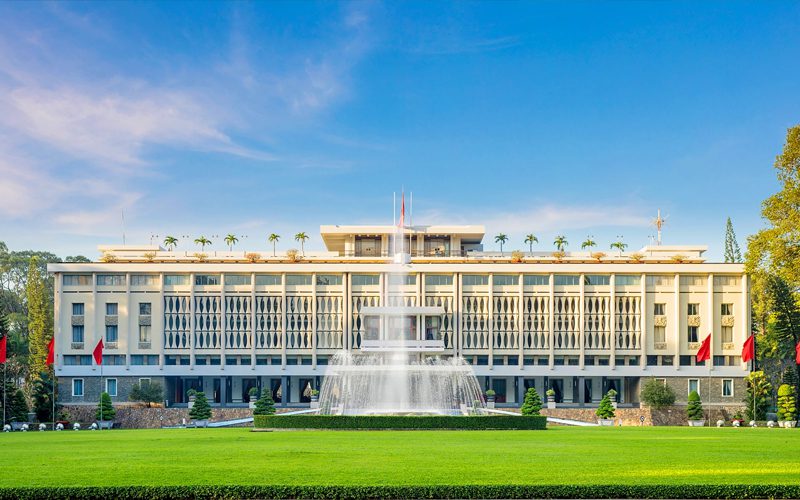
Independence Palace
This is an important historical structure in Ho Chi Minh City, associated with the milestone of national reunification. It currently preserves many valuable documents about national history and has an exhibition area, restaurants, and cafes serving visitors.
Nguyen Hue Walking Street
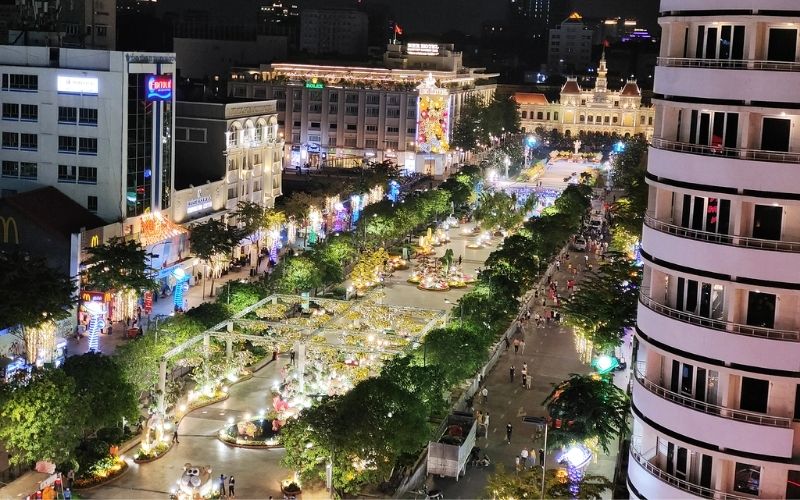
Nguyen Hue Walking Street
This is a vibrant destination, featuring open spaces, and lots of trees and is home to many fun activities, street art and unique cuisine, especially in the evening. For a more unique experience, visit Nguyen Hue Café Apartment, a nine-story building with many independent cafes, fashion stores and co-working spaces. Each floor has its own unique features, from nostalgic-style cafes to modern tea shops. You can sit on the balcony and enjoy the panoramic view of Nguyen Hue Walking Street while sipping a cup of Vietnamese coffee.
> > > Ready to explore more? Dive into Ho Chi Minh City’s nightlife scene with our detailed guide here.
Saigon Opera House
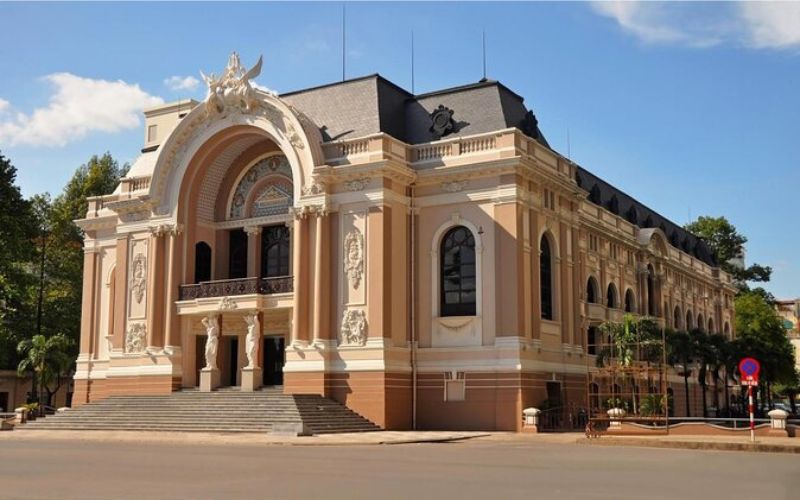
Saigon Opera House
The Saigon Opera House is one of the most spectacular attractions in Ho Chi Minh City, located just a three-minute walk from the People’s Committee Building. It also has French Renaissance-inspired architecture and is a great place for any tourist to take a photo. There are also many different performances and shows at the Opera House for you to explore.
Some tips before visiting for tourists
To make the most of your visit to the Ho Chi Minh City Government Building and surrounding attractions, keep these helpful tips in mind:
- The Ho Chi Minh City Hall is not open to the public as it is still used as a city office. Despite this, it remains one of the most beautiful and well-preserved landmarks in the city and is a must-see for architecture lovers. You can still admire the building’s architecture from the outside and take photos.
- The best time to visit the building is in the evening when it is lit up. The soft yellow light highlights the intricate architectural details, creating a picture-perfect scene.
- If you plan to visit other nearby destinations, pack comfortable clothes and shoes as you may have to walk a bit in Saigon’s hot and humid tropical weather.
- This is a popular tourist area so keep an eye on your belongings at all times. Pickpockets and phone snatchers can happen while you are busy taking photos. Avoid keeping your phone in your back pocket or holding it loosely when taking photos and use a crossbody bag instead of a tote bag or open backpack.
With this guide, hopefully, you will have all the essential tips to make the most of your visit to Ho Chi Minh City Hall. So take your time, soak in the history, take some great photos and enjoy the energy of Nguyen Hue Walking Street. With careful planning, your visit to Ho Chi Minh City Hall will be a memorable highlight of your time in Saigon!
Read more:

